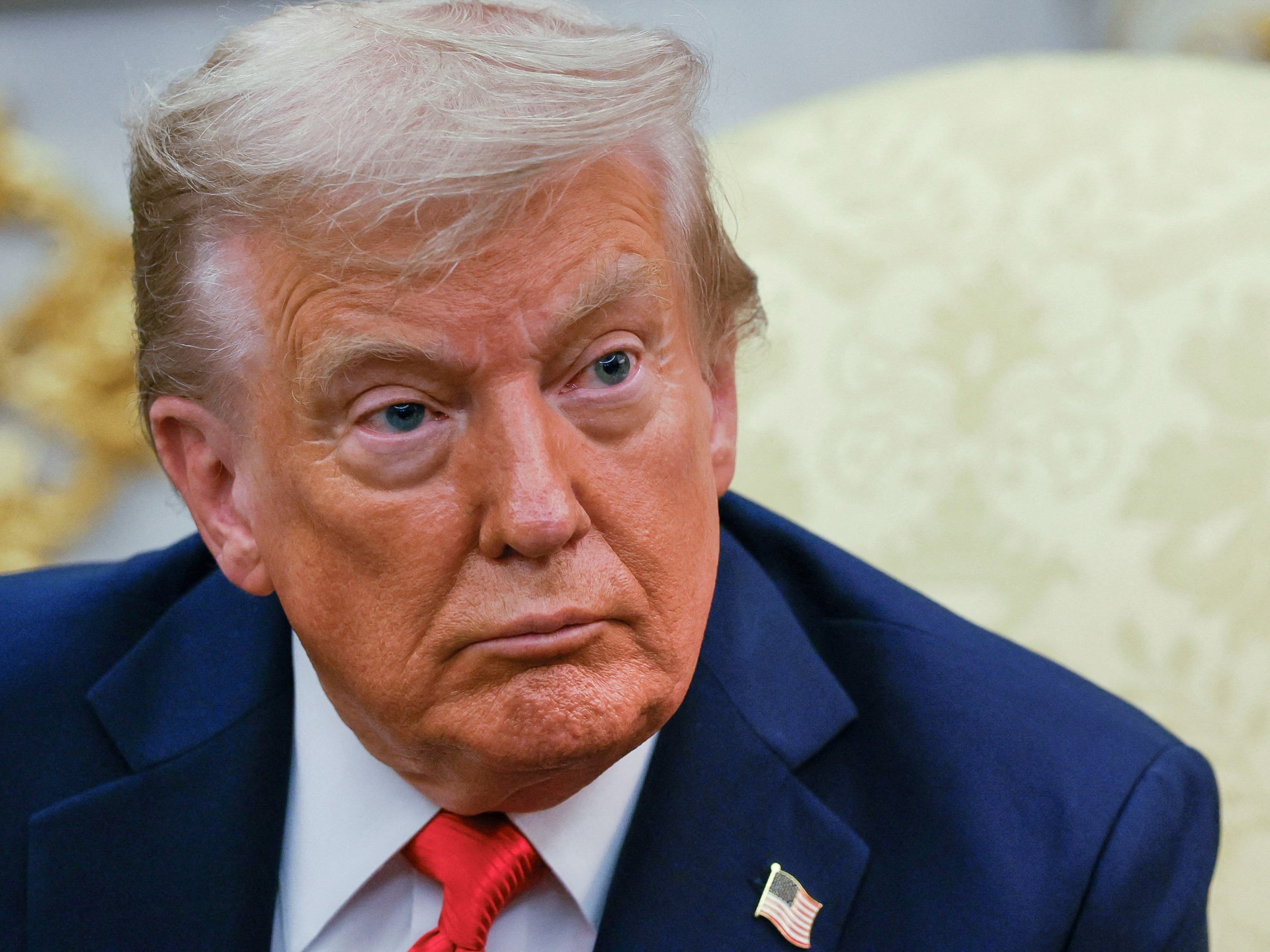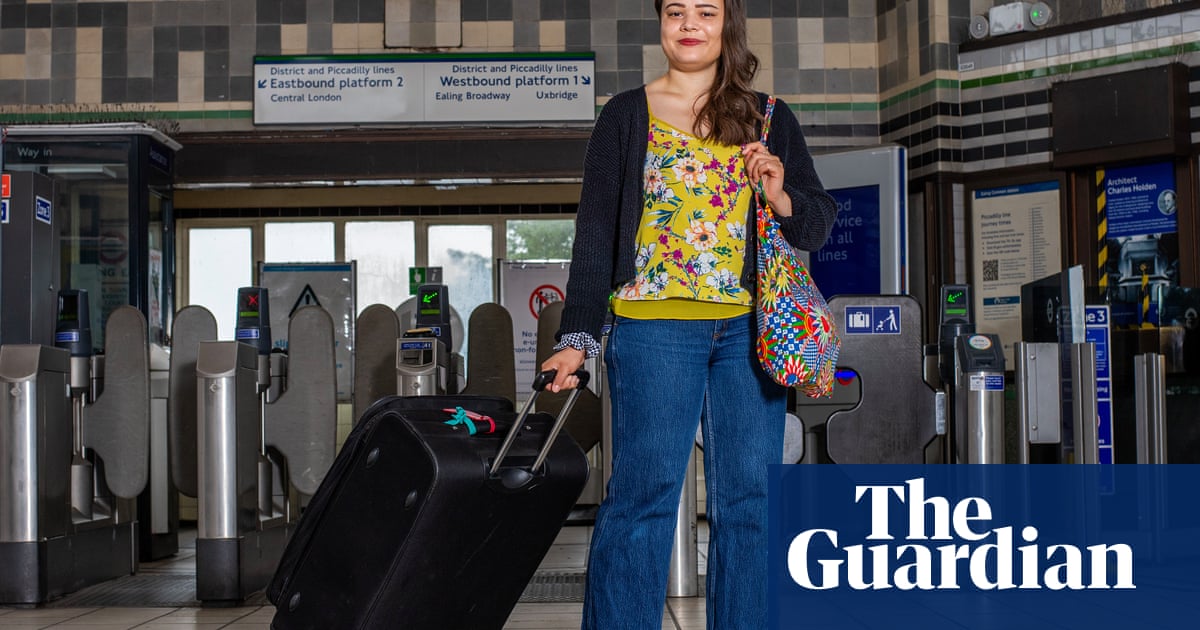How Trump’s newfound love for Chinese students is drawing MAGA backlash | Donald Trump News
United States President Donald Trump has announced that he will allow 600,000 Chinese students into US universities.
His announcement on Monday, which marks a sharp departure from the Trump administration’s crackdown on Chinese students launched earlier this year, has caught his conservative base off guard.
Here is more about what Trump is saying now, in contrast to what the administration has said in the past – and how some within his Make America Great Again (MAGA) support base are reacting.
What has Trump announced about Chinese students?
During a meeting on Monday at the Oval Office with South Korean President Lee Jae Myung, reporters asked Trump whether he would meet Chinese President Xi Jinping.
Trump responded: “President Xi would like me to come to China. It’s a very important relationship. As you know, we are taking a lot of money in from China because of the tariffs and different things.”
He then talked about Chinese students: “I hear so many stories about ‘We are not going to allow their students’, but we are going to allow their students to come in. We are going to allow it. It’s very important – 600,000 students.”
On Tuesday, during a cabinet meeting, Trump reiterated his recent sentiments about Chinese students, saying, “I told this to President Xi that we’re honoured to have their students here.
“Now, with that, we check and we’re careful, we see who is there.”
Trump said that the US would struggle without Chinese students.
The Chinese Ministry of Foreign Affairs said that Trump told Xi during a phone call in June that “the US loves to have Chinese students coming to study in America”.
How has the Chinese government reacted?
Speaking at a regular news conference on Wednesday, Chinese Foreign Ministry spokesperson Guo Jiakun expressed hope that Trump would act on his commitment to admit Chinese students into US universities.
Guo also urged the US to stop “unprovoked harassment, interrogation and deportation” of Chinese students.
What has the Trump administration said about Chinese students in the past?
In late May, US Secretary of State Marco Rubio announced that Trump would “aggressively” revoke the visas of Chinese students.
In an X post, Rubio wrote: “The US will begin revoking visas of Chinese students, including those with connections to the Chinese Communist Party or studying in critical fields.”
The Trump administration did not provide clear details at the time about which students would be affected by the revocations. Observers viewed the brief announcement as intentionally vague.
“I think the vagueness is part of the [Trump administration’s] strategy, because it is not about a concrete policy,” Kyle Chan, a researcher on China at Princeton University, told Al Jazeera in May. “I don’t think it’s really, at the end of the day, about national security and trying to find the few individuals who may pose a genuine risk.”
In August, the US State Department revoked 6,000 international student visas because of violations of US law and overstays, according to the BBC, which quoted an unnamed department official. The nationalities of the students whose visas had been revoked were not known.
While Rubio did not specify what qualifies as a “critical field”, in March, a US congressional committee of the House of Representatives sent a letter to leadership at multiple US universities requesting information about Chinese nationals enrolled in advanced science, technology, engineering, and medicine programmes on their campuses.
John Moolenaar, chair of the congressional committee, claimed that the Chinese Communist Party was placing Chinese researchers in top US institutions to access sensitive technology.
How many Chinese students are there in the US?
During the 2023-2024 academic year, 277,398 Chinese students were enrolled in US universities, making up 24.5 percent of the 1.13 million international students, according to the annual Open Doors report from the Institute of International Education (IIE) and the US State Department.
According to the report, Chinese students were second only to Indian students, who constituted 29 percent of international students in the 2023-2024 year.
During the 2022-2023 academic year, Chinese students made up 27.4 percent of the international student population.
The proportion was even higher in 2020-2021, when 34.7 percent of international students in the US were from China.
What is behind Trump’s latest announcement about admitting Chinese students?
During an interview with Fox News on Monday, Secretary of Commerce Howard Lutnick said Trump’s recent statements stem from a “rational economic view”.
Lutnick said that 15 percent of US universities would go out of business without international students.
International students at US colleges and universities contributed $43.8bn to the US economy and supported more than 378,000 jobs during the 2023-2024 academic year, according to data released by the nonprofit organisation, NAFSA: Association of International Educators.
According to NAFSA, there were 1.1 million international students in the US, each contributing about $39,800 on average.
By that calculation, the 277,398 Chinese students in the US in 2023-24 would have contributed in excess of $11bn to the US economy that year.
How have Trump supporters reacted?
Trump’s recent statements have drawn ire from some within his MAGA base.
Republican Georgia congresswoman Marjorie Taylor Greene wrote in an X post on Monday: “If refusing to allow these Chinese students to attend our schools causes 15 percent of them to fail then these schools should fail anyways because they are being propped up by the CCP.”
We should not let in 600,000 CHINESE students to attend American colleges and universities that may be loyal to the CCP.
If refusing to allow these Chinese students to attend our schools causes 15% of them to fail then these schools should fail anyways because they are being…
— Rep. Marjorie Taylor Greene🇺🇸 (@RepMTG) August 26, 2025
Trump ally and far-right internet personality Laura Loomer made a series of posts on X opposing Trump’s idea of bringing in Chinese students. One of the posts read: “Nobody, I repeat nobody, wants 600,000 more Chinese ‘students’ aka Communist spies in the United States.”
News site Axios reported that former White House adviser and Trump aide Steve Bannon said on Tuesday: “Any foreign student that does come here ought to have an exit visa stapled to his or her diploma to leave immediately. Give them 30 days.”
Right-wing internet personality Christopher Rufo wrote in an X post on Monday: “We can’t accept 600,000 Chinese students. If anything, we should reduce the number of Chinese visas, especially for students with political connections to the CCP.”
The Chinese Communist Party (CCP) is the main party in China, with about 100 million card-carrying members. China has about 400 million families, so on average, one in every four Chinese citizens has an immediate relative in the CCP.

